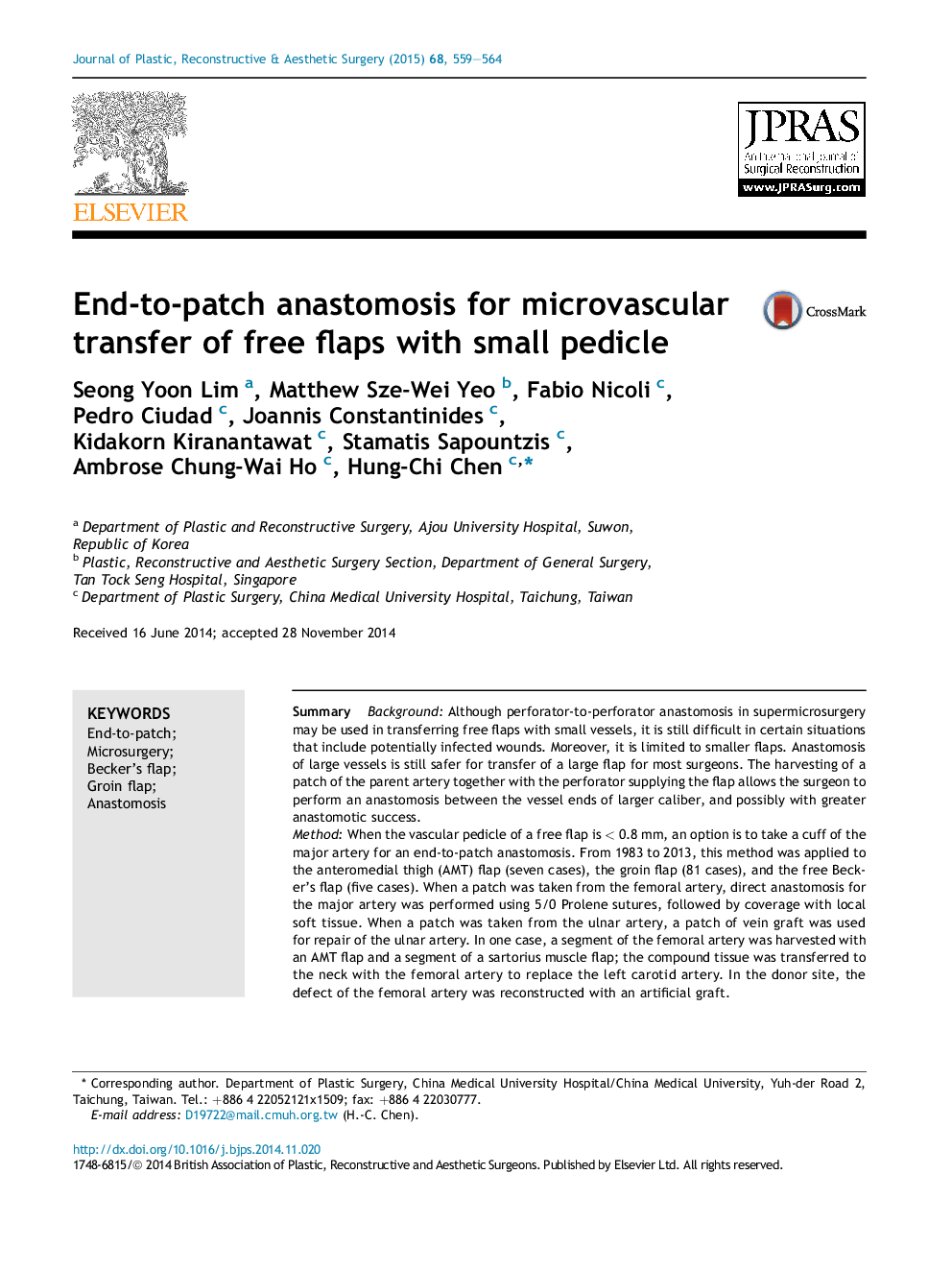| کد مقاله | کد نشریه | سال انتشار | مقاله انگلیسی | نسخه تمام متن |
|---|---|---|---|---|
| 4118104 | 1270324 | 2015 | 6 صفحه PDF | دانلود رایگان |
SummaryBackgroundAlthough perforator-to-perforator anastomosis in supermicrosurgery may be used in transferring free flaps with small vessels, it is still difficult in certain situations that include potentially infected wounds. Moreover, it is limited to smaller flaps. Anastomosis of large vessels is still safer for transfer of a large flap for most surgeons. The harvesting of a patch of the parent artery together with the perforator supplying the flap allows the surgeon to perform an anastomosis between the vessel ends of larger caliber, and possibly with greater anastomotic success.MethodWhen the vascular pedicle of a free flap is < 0.8 mm, an option is to take a cuff of the major artery for an end-to-patch anastomosis. From 1983 to 2013, this method was applied to the anteromedial thigh (AMT) flap (seven cases), the groin flap (81 cases), and the free Becker's flap (five cases). When a patch was taken from the femoral artery, direct anastomosis for the major artery was performed using 5/0 Prolene sutures, followed by coverage with local soft tissue. When a patch was taken from the ulnar artery, a patch of vein graft was used for repair of the ulnar artery. In one case, a segment of the femoral artery was harvested with an AMT flap and a segment of a sartorius muscle flap; the compound tissue was transferred to the neck with the femoral artery to replace the left carotid artery. In the donor site, the defect of the femoral artery was reconstructed with an artificial graft.ResultsThe flaps had no failure or partial necrosis, but one patient developed bleeding from the femoral artery 2 days postoperatively. It was treated by adding one more suture for the femoral artery and coverage with the sartorius muscle. In the ulnar artery, the patients did not complain of cold intolerance and the postoperative angiogram showed good patency of the ulnar artery after an average follow-up of 1 year.ConclusionFor the majority of plastic surgeons, this method provides a reliable and comfortable anastomosis when transferring a flap with small vessels. The only concern is to repair the donor artery carefully and ensure coverage of the repair site with local tissue.
Journal: Journal of Plastic, Reconstructive & Aesthetic Surgery - Volume 68, Issue 4, April 2015, Pages 559–564
